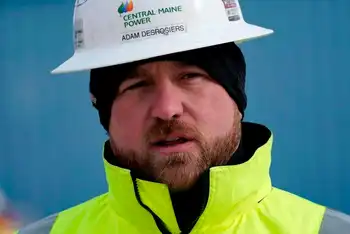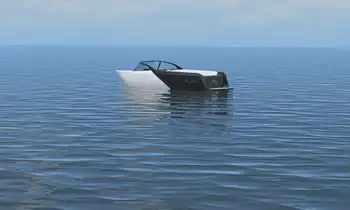Renewable energy left blowing in the wind
But when Invenergy chairman Michael Polsky looks at Canadian renewable energy policy these days, he sees uncertainty that spells problems for a sector already battered by a global recession and credit crunch.
The contrast with the picture in the United States couldn't be starker.
While Canada's federal budget last month offered little for renewable energy, the $787-billion (US) economic stimulus signed by U.S. President Barack Obama heaps incentives on the sector.
And Mr. Obama - who visited Ottawa on February 19 - is promising more support for wind, solar and biofuels when he moves forward with a new energy bill this spring.
Four days after Ontario announced its latest wind contracts, Canada's wind energy sector was stunned when the federal government brought down a budget that failed to renew a crucial program subsidy, one that is set to run out in March, 2011, and whose popularity means the money may run out before the end of this year.
Mr. Polsky believes that his project, a 78-megawatt wind farm in Chatham-Kent, will still benefit from the federal EcoEnergy for Renewable Power program. The company is also building a 138-megawatt wind farm in Quebec, for which it expects to get federal assistance.
But the EcoEnergy program's uncertain status will make it more difficult to attract financing from already skittish investors, says Mr. Polsky, whose company raised $700-million late last year for some U.S. projects.
"I personally feel that, especially in light of what is going on in the U.S., it would be a wise idea to continue with that [EcoEnergy] fund to attract more investments in renewable in Canada," the energy executive said in an interview from his home in Chicago.
"The subsidy makes a big difference in the economics [of wind projects], definitely."
Like most industries, the renewable energy sector has been hit hard by the recession and the drop in prices of crude oil and natural gas.
Wind and solar developers across the globe have been starved of credit and scaled back ambitious expansion plans. The ethanol industry - which boomed with the help of subsidies and government mandates - hit the wall in the United States last year and several leading American renewable companies have filed for bankruptcy protection.
But despite setbacks, the U.S. industry remains optimistic that the same factors that led to the previous boom - policies to reduce greenhouse gas emissions, concerns over energy security, and the debilitating economics of borrowing abroad to pay for high-cost, imported oil - will endure.
"We, like every other industry, are facing access to capital issues and other problems," said James Dineen, president of the American Renewable Fuels Association. "But the political support and the public policy drivers for renewable fuels are stronger today than ever."
Meanwhile, the U.S. stimulus plan extended the federal tax credit for renewable energy for three years, an important measure of stability after years of requiring an annual renewal. It also allows companies that have no taxable income and can't use a credit to take the money as a grant, and provides loan guarantees.
And Mr. Obama is expected to push for a federal "renewable portfolio standard," a benchmark that would require utilities to obtain a certain percentage of their power from renewable sources within a given period of time. He also backs low-carbon fuel standards, which could boost the appetite for biofuels.
In Canada, governments also talk about their commitment to clean energy. But in Ottawa, that often translates into support for nuclear power, natural gas and technologies to scrub greenhouse gases from fossil fuels like coal and oil. The federal government has backed the ethanol industry - as much for its rural development benefits as its environmental gains - but even there, the targets are far less ambitious than those of the Obama administration.
Several provinces are spending considerable money to add renewable power to the grid and to increase the use of biofuels. But the programs are often inconsistent and ad hoc, in contrast to many states that have continuing renewable portfolio standards that provide greater clarity.
Industry analysts say the uncertainty - problematic at the best of times for fledgling industries - is particularly troublesome when credit markets are balky.
"The more vague the road map is, the less inclined people are to invest, because you don't want to go down a certain path and invest and then have the game change on you," said Sara Elford, a clean-tech analyst with Canaccord Capital Inc. "Having a clear understanding of exactly what the rules are going to be is terribly important."
Related News

Construction starts on disputed $1B electricity corridor
PORTLAND - Construction on part of a $1 billion electricity transmission corridor through sparsely populated woods in western Maine is on hold because of legal action, but that doesn't mean all building has been halted.
Workers installed the first of 829 steel poles Tuesday on a widened portion of the existing corridor that is part of the project near The Forks, as the groundwork is laid for the 145-mile ( 230-kilometre ) New England Clean Energy Connect.
The work is getting started even though the 1st U.S. Circuit Court of Appeals delayed construction of a new 53-mile ( 85-kilometre ) section.
Three conservation…





